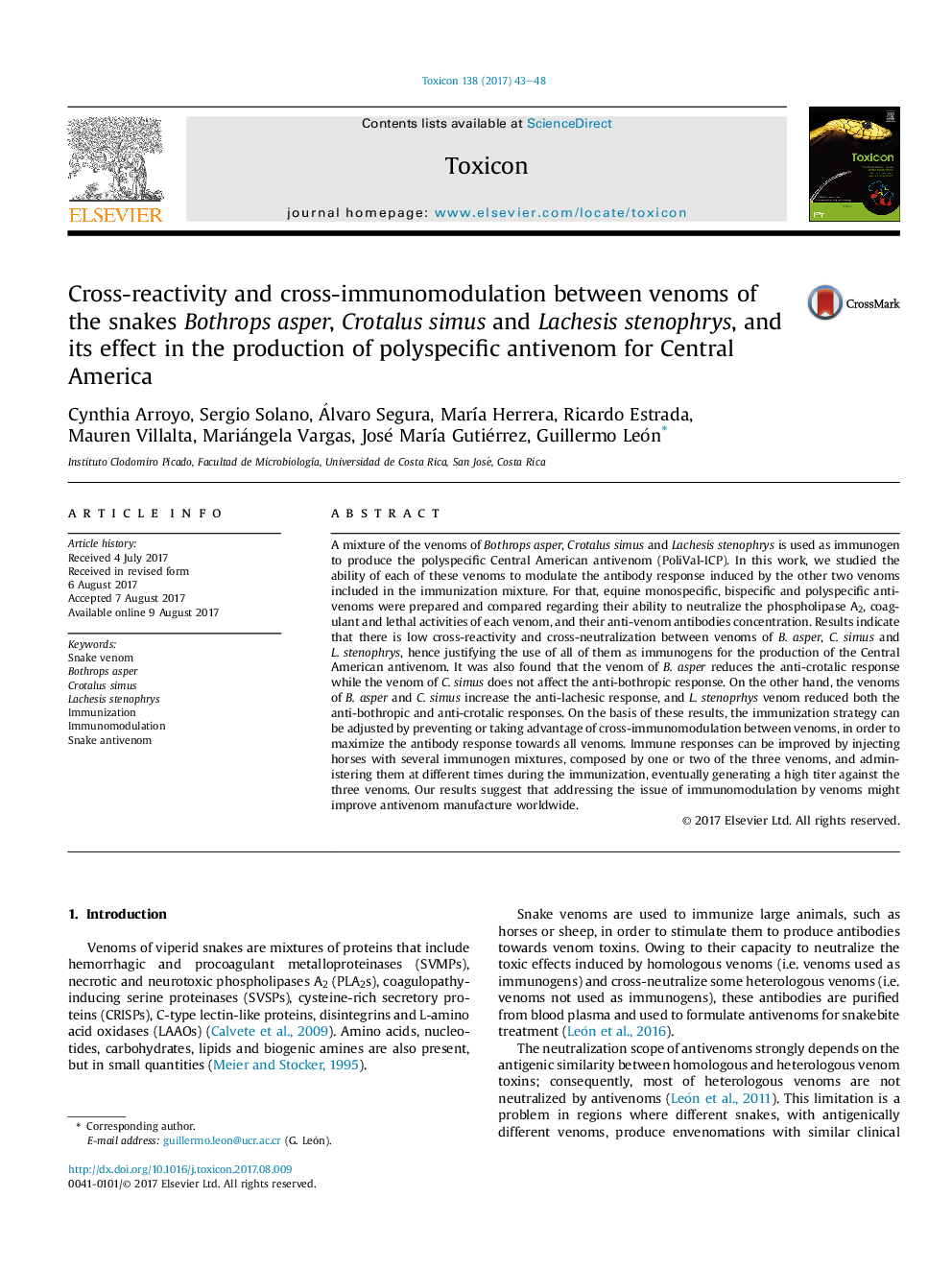| کد مقاله | کد نشریه | سال انتشار | مقاله انگلیسی | نسخه تمام متن |
|---|---|---|---|---|
| 5519204 | 1544098 | 2017 | 6 صفحه PDF | دانلود رایگان |

- The cross-reactivity and cross-immunomodulation between venoms of B. asper, C. simus and L. stenophrys were studied.
- There was low cross-reactivity between venoms of B. asper, C. simus and L. stenophrys.
- Venom of B. asper reduces the anti-crotalic response, while venom of C. simus does not affect the anti-bothropic response.
- Venoms of B. asper and C. simus increase the anti-lachesic response.
- Venom of L. stenoprhys reduced both the anti-bothropic and anti-crotalic responses.
A mixture of the venoms of Bothrops asper, Crotalus simus and Lachesis stenophrys is used as immunogen to produce the polyspecific Central American antivenom (PoliVal-ICP). In this work, we studied the ability of each of these venoms to modulate the antibody response induced by the other two venoms included in the immunization mixture. For that, equine monospecific, bispecific and polyspecific antivenoms were prepared and compared regarding their ability to neutralize the phospholipase A2, coagulant and lethal activities of each venom, and their anti-venom antibodies concentration. Results indicate that there is low cross-reactivity and cross-neutralization between venoms of B. asper, C. simus and L. stenophrys, hence justifying the use of all of them as immunogens for the production of the Central American antivenom. It was also found that the venom of B. asper reduces the anti-crotalic response while the venom of C. simus does not affect the anti-bothropic response. On the other hand, the venoms of B. asper and C. simus increase the anti-lachesic response, and L. stenoprhys venom reduced both the anti-bothropic and anti-crotalic responses. On the basis of these results, the immunization strategy can be adjusted by preventing or taking advantage of cross-immunomodulation between venoms, in order to maximize the antibody response towards all venoms. Immune responses can be improved by injecting horses with several immunogen mixtures, composed by one or two of the three venoms, and administering them at different times during the immunization, eventually generating a high titer against the three venoms. Our results suggest that addressing the issue of immunomodulation by venoms might improve antivenom manufacture worldwide.
Journal: Toxicon - Volume 138, November 2017, Pages 43-48